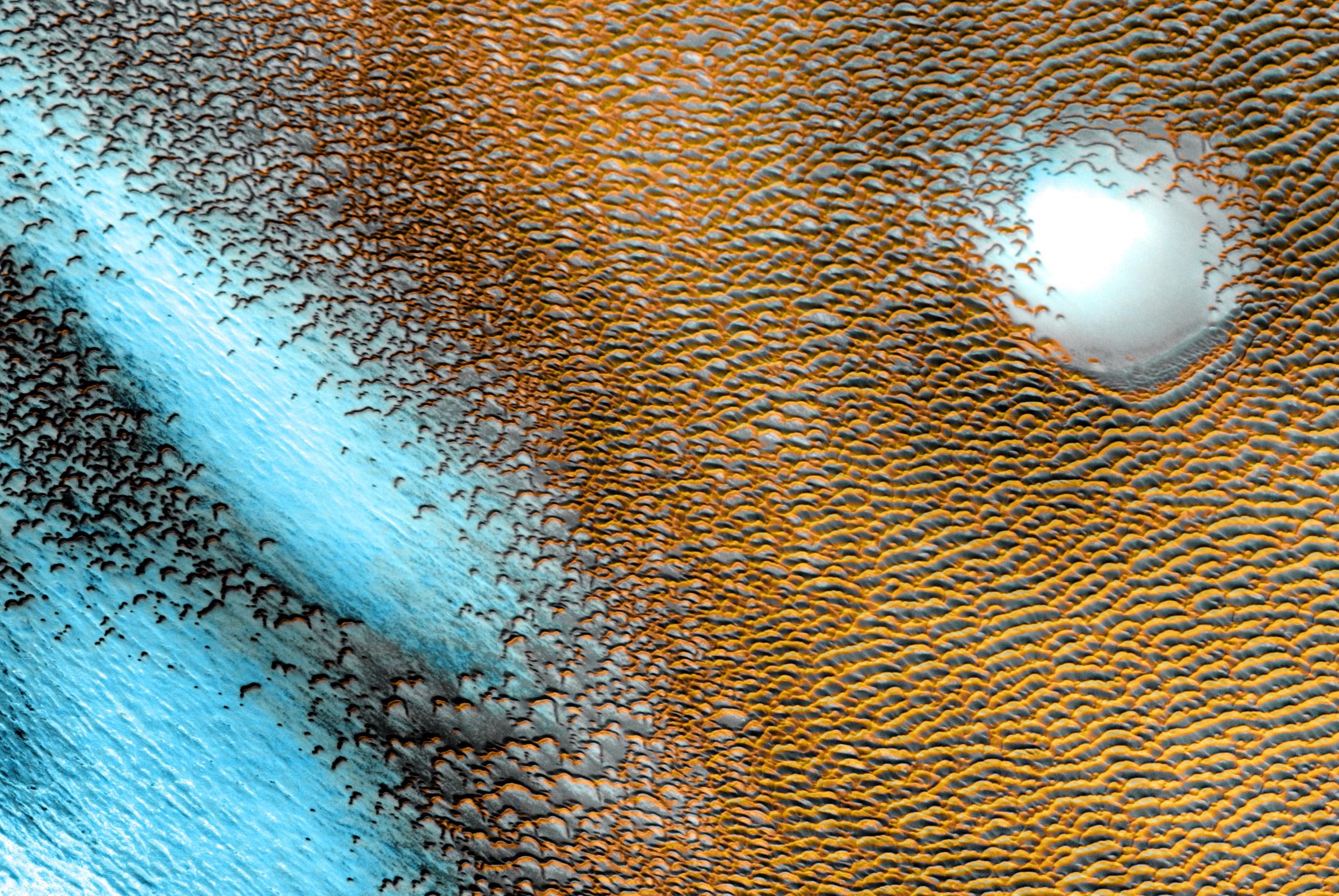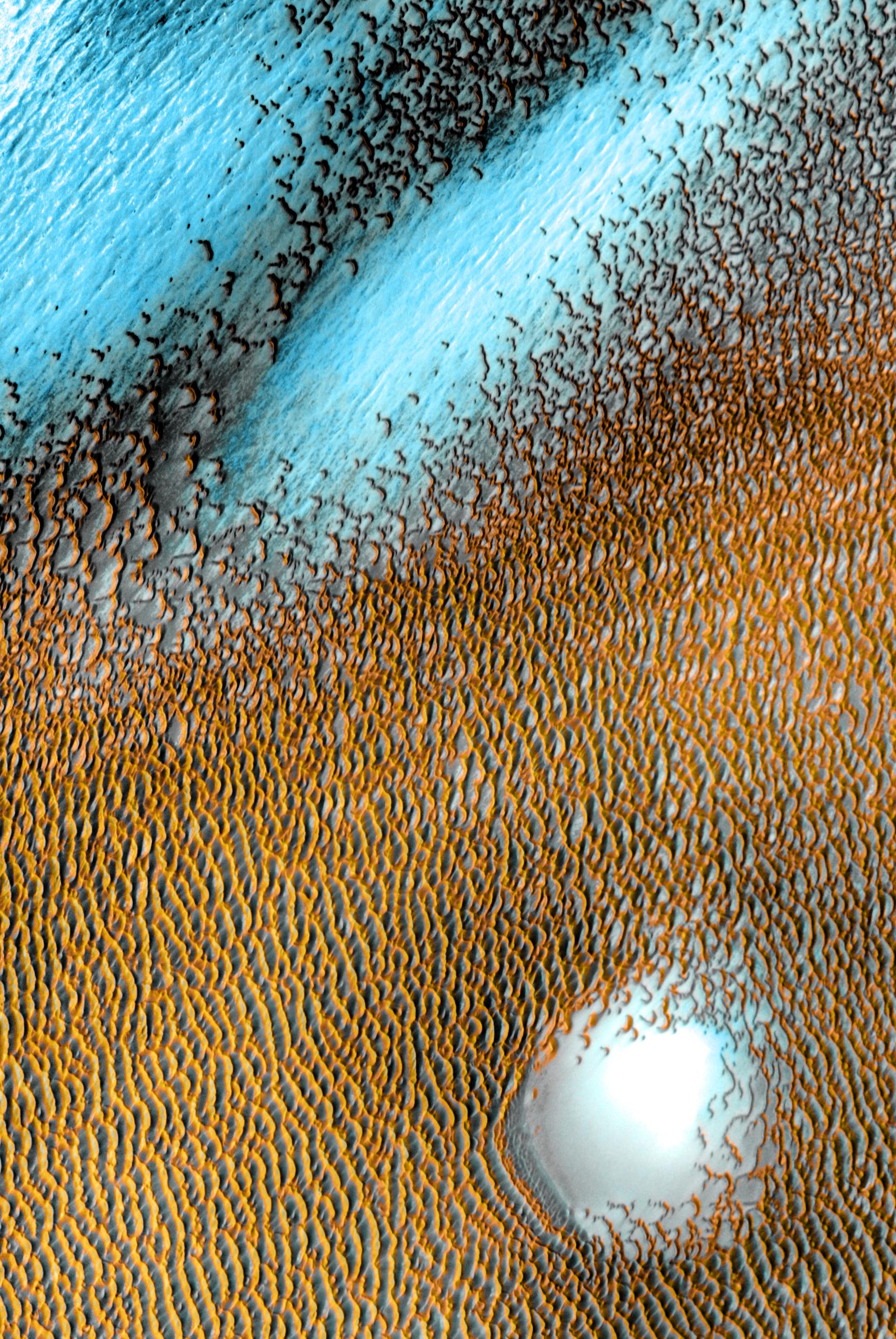Strange blue structures glow on Mars in new NASA image
The north pole of Mars looks even more alien in blue.

NASA astronomers just shared a colorful new view of Mars that proves the Red Planet also looks great in blue.
Using a special infrared camera aboard the Mars Odyssey orbiter, which has been soaring over the Red Planet since 2001, researchers snapped a thermal image of the Martian north pole, digitally colored to highlight the wide-ranging temperatures there. Areas tinted in blue represent colder regions, while warmer areas are tinted in yellow and orange, according to a NASA statement.
In this image — which covers an area of the pole about 19 miles (30 kilometers) wide — vast sand dunes line up in golden drifts, warmed by the sun on one side and chilled in the darkness on the other.
Related: 10 places in the solar system we'd like to visit
This intricate scene comprises only a small fraction of the entire Martian north pole, which covers an area as large as Texas, the researchers said. As on Earth, the Martian poles are the coldest spots on their planet, with temperatures plunging to minus 220 degrees Fahrenheit (minus 140 degrees Celsius) in winter, according to the National Weather Service.
Both of Mars' poles are covered with permanent caps made of water ice, though carbon dioxide ice (better known as dry ice) adds to the chilling scenery in winter. (Cracks in that dry ice cover are responsible for the creepy patterns known as the "spiders on Mars"). Scientists believe that several liquid water lakes may lurk beneath the Martian south pole, as well.

The colorful image above is a composite of several shots snapped by the Odyssey orbiter between December 2002 and November 2004. NASA shared it April 8 to celebrate the orbiter's 20th anniversary in space (the orbiter launched on April 7, 2001). In that time, the floating observatory has transmitted more than 1 million thermal images of Mars back to Earth, according to NASA.
Sign up for the Live Science daily newsletter now
Get the world’s most fascinating discoveries delivered straight to your inbox.
Besides revealing the likely locations of water ice stored on the planet, Odyssey's eye in the sky has also been a boon for its robotic brethren down below; data from Odyssey helped NASA scientists pick the ideal location for deploying the Perseverance rover in February 2012.
Originally published on Live Science.

Brandon is the space/physics editor at Live Science. His writing has appeared in The Washington Post, Reader's Digest, CBS.com, the Richard Dawkins Foundation website and other outlets. He holds a bachelor's degree in creative writing from the University of Arizona, with minors in journalism and media arts. He enjoys writing most about space, geoscience and the mysteries of the universe.









